
Mick Garris has adapted more Stephen King stories for the screen than any other director in history. He is an author, a screenwriter, a producer, and a director. As a journalist, Mick Garris has interviewed everyone from Ray Bradbury to Steven Spielberg. As the host of his podcast, Post Mortem, he holds court with the most legendary names in horror, most recently welcoming Stephen King, Neil Gaiman, and Jon Landis as his guests. Among countless diverse credits, Mick Garris wrote a music video for Michael Jackson, penned the screenplay for Disney’s Hocus Pocus, and created the Showtime anthology series, Masters of Horror.
He was also once a receptionist for Star Wars.
In this very special Halloween edition of our Keys to the Kingdom column, we talk with Mick Garris about the road to his success and his love of all things horror. From his early years spent devouring horror movies and comics to directing films like Psycho IV and Stephen King’s Sleepwalkers, this is part one of our conversation with one of the most prolific directors in the history of horror.
JS: Besides our love for Stephen King, you and I have something in common. We both became published journalists when we were teenagers, and we also worked for the same publisher.

MG: Oh, really? Who did you work for?
JS: When I was 15, I became a staff writer for Femme Fatales, which was the sister publication to Frederick S. Clarke’s magazine, Cinefantastique.
MG: Oh my gosh, yes! I wrote for Fred in my early 20’s.
JS: Who was your first interview and how old were you?
MG: I was probably 15 or 16 when I interviewed Ray Bradbury and Rod Serling. One was for our high school paper, but I started my own magazine when I was 17. The Serling interview was for my magazine. Bradbury was for my high school paper. These were the days underground newspapers came to the fore. I started writing for the San Diego Door, which was the newspaper Cameron Crowe was at in the beginning of Almost Famous. The first third of that movie is my life too. Cameron was 15 and I was 17 when we were writing for that paper.
JS: Let me go back a little further, to the years before you began writing. 1951 – 1963. These were the first 12 years of your life.
MG: Ah, yes! The wonder years.
JS: Yup! And they happen to be the first years of American suburbia as we know it. They were the first years of Elvis Presley, Davey Crockett, and the Mickey Mouse Club. They were years you saw your first horror films, and they were the 12 years your parents were still together. What is it you remember the most about those days?
MG: Aside from family strife? I had a very kind of isolated childhood, even though I had two brothers and a sister at the time. I remember the San Fernando Valley as being very Norman Rockwell in some ways, but on a more blue collar level. My dad worked at a defense plant, not doing bomb things, but doing blueprints and design. The thing I remember most fondly are the movies, television, comic books, and books that I consumed voraciously. My older brother was an athlete and my younger brother and younger sister were too young to be involved in the things I was involved in. I was the only person I knew who was into the darker things, like watching the old Universal monster movies that would come on TV late at night. Fortunately, my mom did not discourage these things. It was like, “At least he’s reading! It may not be stuff that I approve of, but at least he’s reading.” It was kind of idyllic in some ways and lonely in other ways.
JS: In 1961, with four children crammed into the back of a station wagon, your parents took you to a drive-in to see a movie that would change your life forever. Tell me about the first time you saw Psycho.
MG: It was so much fun. First of all, it was at the Reseda Drive-In which is the drive-in in Peter Bogdanavich’s movie Targets with Boris Karloff. So that was our regular movie theater. It was just so joyous. In those days, people thought horror movies were meant for kids, and Psycho really changed everything. It was a time when most of the movies coming out in theaters were in color, and this reverted to black and white. It was jarring because it was a big black and white Hollywood movie. But the intensity of it was something none of us had expected or experienced before. Nobody ever imagined that 30 years later, I would be making a prequel to the film. It was deeply ingrained in me though. We teased my little sister mercilessly. She must have been 5 years old at the time, and we would scream, “Mrs. Bates!” turning around in the chair and rolling our eyes backwards like a corpse. I had already loved the genre of horror, but this really brought it home. This wasn’t supernatural anymore. This was something that could happen at the house next door.
JS: You were raised mostly by your mother, weren’t you?
MG: Well, after my parents split up in my early teens, my mom brought up the four of us. Then she remarried and had three more. So when I was 16 years old, the family became another family altogether.
JS: How did life change for you after they split?
MG: We’d always had a tough time making a go of it because there were four kids, but now it was more difficult. My mom was not present because she was trying to earn a living to support the family. We kind of raised ourselves for a while. We were the definition of latch key kids. We were all very different from one another and didn’t really hang out.
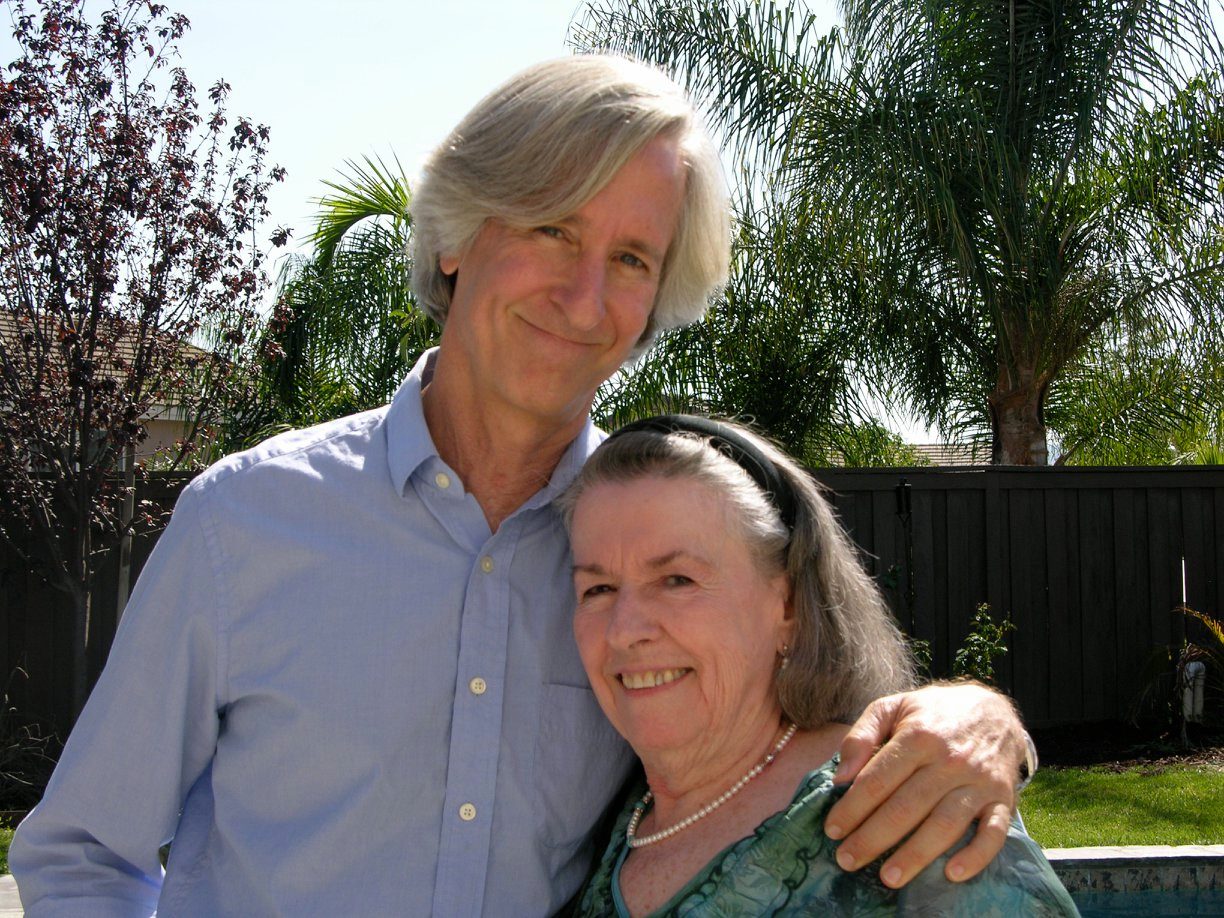
JS: And these were the years you became a writer. Is that something you aspired to do?
MG: I originally wanted to be a cartoonist! I wanted to make animated cartoons. But right around 12, I started writing, and as soon as I did, I literally stopped drawing and changed focus completely. I knew I wanted to write, but I didn’t have ambitions of doing it professionally because I was this lower middle class kid from the San Fernando Valley. How would that even be possible? But I wrote because, as you know, writers write. You write because you can’t not write. And with a little luck and a lot of hard work, maybe you can make a living at it. Once I changed course, writing is where my passion was. That and music, so I moved to musical journalism and started interviewing the people who fascinated me.
JS: Some huge names.
MG: I interviewed Jimmy Hendrix and Janis Joplin when I was 16 years old. I was still writing fiction, but nobody was publishing it yet. I also started writing my own music and singing in a band called Horse Feathers when I was 18. We opened for some pretty big acts and it looked like we were going to have some great success, but that never came to be. So I never became the rock star, but I kept working on writing and started getting the occasional short story published here and there. The journalism, I wasn’t making a living at, but it was teaching me how to tell a story and relay narratives.
JS: And you still interview to this day.
MG: It’s evolutionary for me. I learn something from everyone I talk to. I get to talk with people I admire and find out what makes them tick. That curiosity began at an early age for me.
JS: Can you remember the first short story you wrote?
MG: Yes. (laughs) I was 12. It was a short story called “The Unforgivable Sin” about someone who committed suicide and woke up in a premature burial type scenario in the gave, struggling mightily to get out. And the O’Henry ending is that finally, after peeling his fingernails off trying to get through the wood of the coffin, a dozen hungry rats clamor inside, and that’s how it ends.
JS: That’s delicious! I hope you still have it somewhere.
MG: I’m sure I don’t. It’s in my head and that’s where it will remain. Shortly thereafter, I sent Ray Bradbury something I wrote and he was very encouraging about it. He was my idol. I read every word he wrote. Just devoured all of his stuff. Even at 15 or 16 when I interviewed him, he was shocked at how well prepared I was for the interview and how well I knew his stuff. Without knowing it, he was a mentor. Those mentorships continue, too. I still think of Stephen King in that way as well, and Richard Matheson who I worked with on Amazing Stories. And people who I interview who I’m not familiar with before I interview them, they all become mentors or teachers or gurus who I gain inspiration from at the very least.
JS: When I think of 1977, there is only one thing that I think of and that’s Star Wars.
MG: Me too. Absolutely.
JS: There had not been anything like it in the world. Everyone was talking about it, and of course that ends up being the year you’re hired by George Lucas to work for what was at the time called The Star Wars Corporation. How in the world does that happen?
MG: (laughs) Well, I was working at Tower Records in Westwood! And really trying to make a go of it as a writer. A friend of mine knew a guy named Charlie Lippincott, who handled all the marketing for Star Wars and created genre merchandising. Nobody had ever done that before Star Wars.
JS: That’s for sure!
MG: He told me they were looking for someone to look in their office. I went and applied, and it was a receptionist job. It became more than that, but it was $150 a week. I went in and met with them and they hired me on the spot. The movie was done, and it was just coming out. I would answer the phone, “Star Wars! May I help you?” One of my jobs became operating the R2-D2 robot, including for the Oscars that year. There are commercials for Kenner toys where I’m the man behind the remote control.
JS: You must have met so many great people working there too.
MG: I met George Lucas a couple times, but just in passing. Not enough for him to know me. I was writing for Cinefantastique at the time, and I interviewed several people who worked on Star Wars. Tech guys mostly, the visual effects people. But I did meet Mark Hamill and Harrison Ford. Mark and I became friendly. In fact, when Sleepwalkers came along, I asked him if he would do a cameo, so that’s how that came about.
JS: It is around this same time that you become sort of the James Lipton of the horror world, having your own television show.
MG: Yes, I’d never really lost interest in interviewing the legends of the genre. I called the head of programming for the Z Channel, the first pay TV channel in Los Angeles before there was an HBO or Showtime here. I basically just pitched them the idea of a genre show where I would do a 15 minute interview before the movie was shown. Steven Spielberg, William Friedkin, John Carpenter. We had a lot of interesting people on that show. I was just very passionate about and very interested in a genre that was treated at the time like a gutter genre. I remember very clearly when Spielberg came on, he said after, “You know, I really enjoyed that, and I don’t often.” It was friendly turf for people in a genre that had been disrespected.
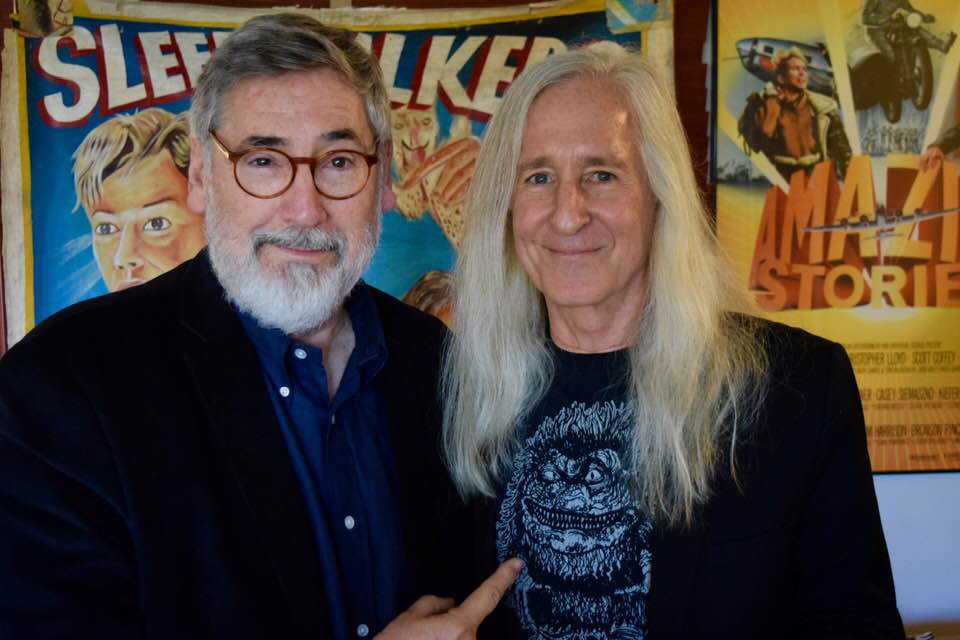
JS: And you’re still doing those interviews to this day with your podcast Post Mortem. Why is horror history important to you? Why is it essential to create these sort of time capsules?
MG: Well, it’s really for me to learn and appreciate where it all comes from and where it is all going. Evolve or die. If you’re a filmmaker and you become calcified in a success that you had 30 years ago, your life is going to be memories. To finally get Stephen King on the podcast, or someone like Neil Gaiman, it’s a wonderful opportunity to share my love for their work with others, and not just have it be about promoting something. It’s a show that is about each guest’s career, rather than their current movie.
JS: In the early 1980’s, you started working with Universal as the world’s first horror genre publicist. How did all that come about?
MG: Bob Rehme took me to Universal. Bob was running Avco Embassy, where I worked on The Howling and a few other films. Universal had a bunch of genre films coming up in the early 80’s, and Bob knew I would be a value in promoting that to the horror community.
JS: Interesting! So it had nothing to do with having already met and interviewed Spielberg for the Z Channel?
MG: No, but it’s a funny coincidence! Here I was, doing specialized horror publicity for movies, sitting in a conference room of about 30 other people, and in walks Steven Spielberg coming to show us 10 minutes of E.T. that he’d just cut together. He walks in and goes, “Oh hey, Mick!” And about 30 other people all look at each other and go, “Who the fuck is Mick?” And, of course, it was because of that Z Channel interview that he knew who I was.
JS: Did Spielberg know you were a writer?
MG: He didn’t know I was a screenwriter at the time, but later on I was doing The Making of The Goonies and interviewing him for that documentary. He asked me what I was up to, how things were going, and told me about this new show he was doing called Amazing Stories. When he found out I had been writing, I was the first one who was asked to write an episode. That changed my life. That gave me a career in screenwriting from that point forward. It was a tremendous relief to be able to move from marketing and publicizing other people’s movies to actually working on the movies themselves.
JS: You have so many wonderfully diverse writing and directing credits, it is hard to know where to begin. For the nature of this column, I would like to, of course, focus on the many Stephen King adaptations which begin with Sleepwalkers (1992). But you know, we just can’t talk about Sleepwalkers without talking about Psycho IV: The Beginning (1990).
MG: (laughs)
JS: We just can’t! There’s so much of Psycho IV in Sleepwalkers. The incest. The teen sexual angst. The shots of mother at the window. I swear there’s got to be a moment in Sleepwalkers that sounds like Bernard Hermann’s score on speed. Were you aware that you were still paying homage to this great movie that had affected you so many years ago?

MG: It’s one of the reasons I was hired to do Sleepwalkers. I had met with the studio to give them my approach to the movie, as well as my knowledge and passion for King’s work. They ended up hiring someone else, but he took it in another direction so they ended up dropping him and hiring me. Stephen King had director approval. He was sent Psycho IV, and he loved it.
JS: I bet! It’s a hell of a movie.
MG: Well, you have very low expectations on a movie called Psycho IV. There had been two sequels, one of them successful, the other less so. I call Psycho IV and Sleepwalkers my Incest Trilogy. I just haven’t made the third one yet.
JS: Psycho IV was a bit of a return to form though, in that it was written by Joseph Stefano, the writer of the original’s screenplay.
MG: Yes, that screenplay was already in place when I came on board, and I made very few tweaks to it. Sleepwalkers was also written by Stephen King before I was hired. So the similar elements between the two movies were already there. The teen sexual angst and the incest, much more overt in Sleepwalkers. In fact, while we were making it, the head of the studio said, “We’re not putting out a movie about a boy and his mother having sex as long as I’m the head of the studio!” Well, halfway through production he got fired, so he was right. But it was really those elements that really separated Sleepwalkers from the other teen horror movies of its era, and I really wanted to make the most of it. I wanted to make you uncomfortable, both with Psycho IV and Sleepwalkers. And while they are very different films, I think Stephen King saw that if I could do Psycho IV, I could certainly pull off Sleepwalkers.
JS: Like you, I saw Psycho very young. I was probably 7 at the time, and it affected me so deeply I would say it is the bar by which I compare every other film. It is a masterful piece of movie making, and I’m not sure any other film that has had a greater effect on cinema. I am a huge fan of Psycho II, mostly because of Anthony Perkins and because of the movie’s ending —
MG: Yes! Me too.
JS: — but I feel like Psycho IV is probably the most Hitchcockian, save for the original obviously. How did you make that work?
MG: I wanted it to feel like Hitchcock without looking like Hitchcock. Psycho has been my favorite film since the time I saw it, but I wanted to make it stylistically very different. It’s not just in color. The color is super saturated, especially in the flashback scenes. A lot of people do flashbacks in black and white or sepia, but to me memories are more intense than the reality.
JS: Well, they certainly are for Norman.
MG: Right! Certainly for Norman, who dreams in technicolor. I intentionally did everything I could to not make it look like Psycho, but to feel like Psycho. I also wanted to give it the sexuality Hitchcock wasn’t allowed to give Psycho. That’s what drives Norman so much is this stunted sexuality that he was never allowed to indulge.
JS: Well, it worked. The first thing I think of when I think of Psycho IV is the girl in red.
MG: Oh yeah!
JS: That red is just so vibrant. It stands out as such a memory. You should be incredibly proud of the work you did on that movie. It is a wonderful homage to Hitchcock, but it is also very much your own.
MG: Thank you. You know, the color of passion is red. I wanted to use the contrast of blue light from the moon with the red from the tail lights of the car when Norman is trying to sink it, like he did in the first movie. A few years later, I saw Martin Scorcese’s Goodfellas where they are also taking people out of a car, and lighting it with exaggerated red tail lights. I thought, “He must have seen Psycho IV!” It’s the color of passion, of blood, of danger. It is so potent, even color of the lipstick on the young girl Norman kills is vividly hemoglobin.

JS: What did you think of the A&E series, Bates Motel?
MG: I didn’t see that much of it. I watched it for a while, but when it started to be about drug dealing in high school, it lost me. It went in a direction that was not my cup of tea. I hear that it gets much better and that Season 4 is the best, but I don’t know.
JS: Anthony Perkins had also desperately wanted to direct Psycho IV, as he directed Psycho III. How did you navigate those waters with him?
MG: It was not easy. He had directed Psycho III. He had played Norman Bates in all three. He knew Norman better than anyone. He had been directed by Alfred Hitchcock, William Wilder, Orson Welles, and all of the greatest filmmakers in Hollywood history. And I was a young guy coming off of a movie called Critters 2.
JS: (laughs) Understandable.
MG: So, he would test me. There was one scene in particular where he’s on the phone. He gets furious, and slams a butcher knife into a butcher block in the kitchen. We had gone over the scene and had been in agreement about it. So, we’re setting up to shoot it and he says, “Now Mick, this knife thing. It seems so tawdry and cheap.” He goes on for about 20 minutes in front of the crew, telling me what a terrible idea it is. I finally said, “Tony, let’s take this off the stage. Let the crew continue setting up, and we can work this out between ourselves. Let’s make it something everybody benefits from and everyone can be in agreement on.” That’s part of the psychology of being a filmmaker, and I learned a big lesson working with my first movie star doing that on this movie. At one point, I said to him that I wanted to avoid the temptation to lean towards camp. And what followed was literally a 45 minute conversation on the definition of camp.
So, he wanted to know that I had more on my mind than what cool shots I could get. He wanted to know it was about telling the story, and he wanted to test me to know I was trustworthy. Now, there is a great punchline to this story in that we screened the movie for just him in the Alfred Hitchcock Theater at Universal. When it was finished, he went on and on talking about what a great movie it was, why it is the best sequel, why it is so much better than his movie, to the point that I was embarrassed. It was validation of a kind you rarely get in a career. It was very special.
JS: It wasn’t too long after the movie was released that Anthony Perkins passed away sadly, but it is a beautiful send off to his character and to him as an actor. You gave him such an amazing gift with that, and he gave you such an amazing gift as well.
MG: Absolutely. It was an intense experience. There were tabloid headlines that said he was suffering from AIDS throughout the film. He denied it, and we, of course, took his word for it. We would never have been able to get insurance for him had anyone thought that it was true. It ended up being true, and he was sick during the making of the film, though not in a way that you would know. My brother was a Production Assistant on Psycho IV, and he was the only one who knew was what going on because it was going on for him as well. They died within a couple of months of each other.
JS: Oh my gosh, I am so sorry to hear that.
MG: It’s very sad, but the filming was just a very intense and highly personal experience.
JS: I think Psycho IV and Sleepwalkers both show that you have a gift for capturing the authenticity of youth. This shows in your screenwriting, as well. Look at Hocus Pocus, which has become essentially a Halloween classic. I can’t think of anyone else who is a Disney crossover from the horror genre!
MG: (laughs) Well, Stuart Gordon! He was going to direct that. He was attached and helped write the script. The first thing I ever did was this TV movie for Disney called Fuzzbucket. It was an original story I had written for Amazing Stories that Spielberg rejected. I took it to Disney when they offered me a directing gig. It’s about a little boy who has an imaginary friend that turns out not to be an imaginary friend, but an underground dwelling creature called the Fuzzbucket. They go off and have great adventures together. When the little boy finally comes home, there’s mom and dad saying how much they missed him. But they don’t ever once hug. It’s probably because I came from a family that was not physically close like that, but I never wanted to miss that again. I always wanted my characters from that point forward to be able to be more than what is going on in a scene. In the writing process, you have to allow yourself to be florid. I think in my younger days, I was embarrassed of going too far. You can’t be embarrassed of going too far as a writer or director in the horror genre.
That also happened to me with one of my first published short stories, “A Life in the Cinema.” I was reading King and Barker and going, “How do these people allow themselves to just be so naked?” The vividness of the violence of it all! So, for that story I decided I was going to take off all the filters and really go for it. It’s probably one of the most offensive things I’ve ever written as a result, but it sure got published. I was always someone who protected himself from embarrassment and you can’t be a good artist if you do that. You have to be willing to be ashamed. You have to put it on the line with as much honesty as you can, and not be afraid to go all the way.

JS: How big of a Stephen King fan were you by the time that Sleepwalkers landed in your lap?
MG: Huge. I had read everything. Maybe not all The Dark Tower books, but I really knew his stories inside and out. I loved Stephen King’s work because he did to horror what Richard Matheson did a generation before. They took it out of the Carpathian mountains and set it next door.
JS: Absolutely. Stephen King took the horror and put it smack dab in the middle of suburbia. How old were you when you read your first Stephen King book?
MG: I was probably about 25. I think I read ‘Salem’s Lot first, and then The Shining.
JS: What was it like to be such a fan of his work, and suddenly be working with him?
MG: I dealt with the studio mostly, not with King, but we shot his cameo and he had a good time. Then, I screened him my cut at a screening room in New York City. It was just Steve, Tabby, and myself. He was screaming and laughing throughout the whole thing. He was having the time of his life, and as soon as he saw it, he lobbied for me to do The Stand. He had his choice of directors with that and he chose me. That’s really when it all changed.
JS: Sleepwalkers says on the poster it is the first story Stephen King wrote exclusively for film, but on Wikipedia and IMDB you share a writing credit with him. So, how much of the story is Stephen King’s and how much is yours?
MG: Wait, I share a writing credit for that movie on Wikipedia and IMDB?
JS: Yes!
MG: Well, not on the film. My name is not in the credits, and that’s because I didn’t write it. The scene in front of the mirror where you see the true form of the sleepwalkers when they are having sex, I wrote that scene and a couple of others here and there, but no. It is Stephen King’s script. He had to approve the final screenplay, so most of the revisions I would call and say, “The studio would like this, or here’s an idea.” Usually he’d say, “Well, let me think about it,” and then the next morning there would be six pages from him in the fax machine, and they were always just perfect.
JS: Was Sleepwalkers born of a short story that had never been published, or did King really write the script just for the movie?
MG: Written exclusively for the screen! This was an original script. Now, The Regulators started out as a script he was writing that Sam Peckinpah was going to do, but it never ended up happening. So, The Regulators was technically his first screenplay written exclusively for the screen, but it never got made.
JS: Ron Perlman as Captain Soames in Sleepwalkers is just the picture of Collie in Desperation, which you would make years later. Did you cast him in Desperation because of Sleepwalkers?
MG: (laughs) Yeah, I definitely did.
JS: I mean, he’s practically wearing the same outfit!
MG: He was the first one who came to mind when I was reading the Desperation script. Even when I was reading the book, and I don’t usually see actors when I’m reading a book.
JS: There are cats just everywhere in Sleepwalkers. One of my favorite shots is of the cats running through the town. How do you shoot something like that?
MG: A lot of really great trainers. We shot that scene on the back lot at Warner Bros. There were 126 cats total. When you see them all in front of the house, most of them have little harnesses that are all staked into the lawn. They were well trained to be very comfortable. We had 9 different cats to play Clovis, each with a specialty. One was friendly. One would hiss. One would fight. One would run. But we ended up using one cat named Sparks for every shot in the movie except two. Sparks the Cat was a genius actor!
JS: (laughs) We also see in Sleepwalkers something that you see in just about any Mick Garris movie which is how important rock and roll is to you. Something you and Stephen King have in common. The scene that introduces Mädchen Amick is just inspired.
MG: Thank you. Yes, King has always been a rock and roll guy. It’s in my blood too. In Riding the Bullet, for example, it takes place in 1969, so we use all these songs from 1969 to help suck you into the exact time the film is set.
JS: Nicholas Pike did the score for Sleepwalkers and you would use him over and over again. What is it about working with him that you love so much?
MG: He did my first movie! He submitted a tape of music that he thought would be appropriate for Critters 2. I love orchestral music. Everyone was doing cheesy sounding electronic music at the time. I met Nicholas, I loved him, and I thought his musical cues were great choices. We rolled the dice. He’d only done one movie before that, not a theatrical film. What he came up with was just amazing. He hired a non-union 40 piece orchestra and recorded out of town. It just sounded like John Williams. All of the depth and power. It was a style I just found that I really liked. Once you find somebody you work with well, you just want to keep him around.
JS: There is a wonderful scene in Sleepwalkers that features a cameo with just about everyone you can possibly imagine. Stephen King, John Landis, Tobe Hoober, Clive Barker, Joe Dante. I think most people would want me to ask you how you got them all to do it, but I’m more curious as to how you coordinated it with all their busy schedules!
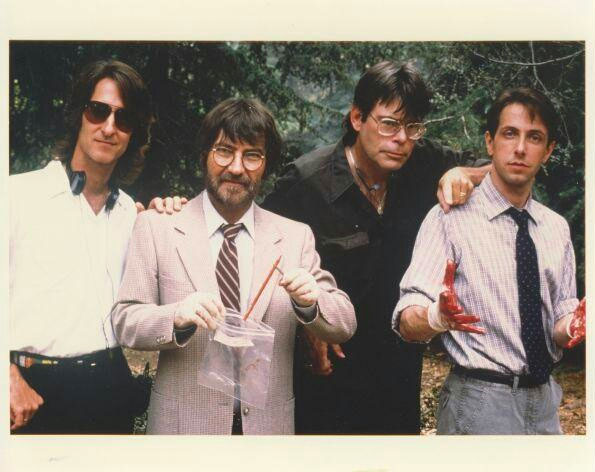
MG: (laughs) Everyone lived in Los Angeles except for King! And all of them were friends of mine except for King too, as we had not met before that day. Clive and he had never met until that day either. Clive’s career basically happened because of a quote King gave to Clive’s books which was, “I have seen the future of horror and it is Clive Barker.” Tobe and he had not really known each other, even though Tobe had done The Mangler. So I just thought it would be great to get them all together. The idea was just too magical not to do. It was something I did for myself, for them, and for the horror audience.
On opening night, I saw it at the Mann’s Chinese Theater, a 1200 seat theater in Hollywood, and when King first comes through the police tape, you hear people just whispering, “That’s Stephen King!”
Those are the fans you make a scene like that for. Those are the true believers.
Next time: Part 2 of our interview with Mick Garris, discussing his many screen adaptations of Stephen King’s work including The Stand, Quicksilver Highway, Stephen King’s The Shining, Riding the Bullet, Bag of Bones, and Desperation.
In the meantime, check out Mick’s podcast Post Mortem available on iTunes, and Mick’s latest movie, Nightmare Cinema, now streaming on Amazon.
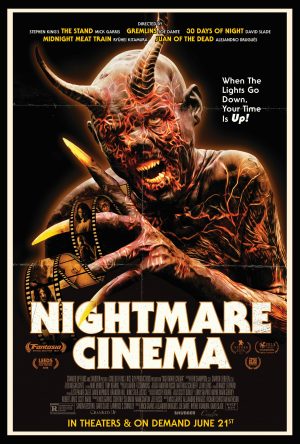





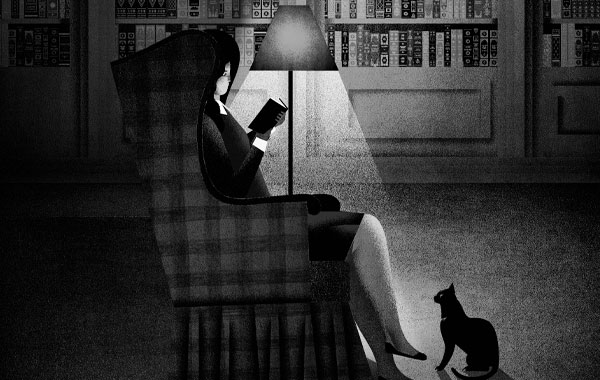

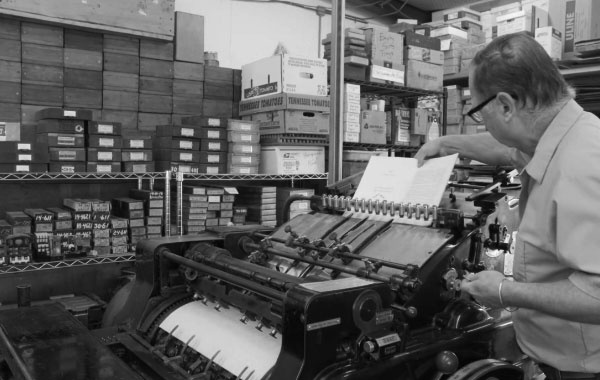
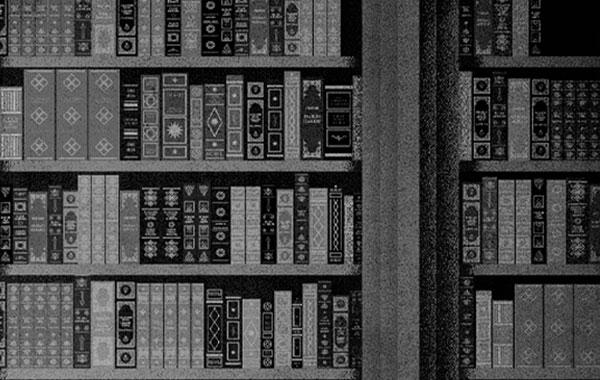

Ila in Maine
Excellent Interview. Really looking forward to reading the rest of this.
Now don’t laugh but when I first saw the picture of Stephen King and the 3 guys I thought “What in the world is he doing with The Monkees?” Don’t know if you’re old enough to get the reference Jason it was not an insult in any way.
Thanks once again for a great read, and Happy Halloween.
Ariel Bosi
As always, AMAZING interview! Congrats!
While some of Mick’s films weren’t too praised by King fans, he did A LOT to be praised and it’s not casual that everyone in the industry loves him! You talk with Mick and you can keep on listening to him for hours and hours.
Looking forward for the second part!
Bryant Burnette
Did part 2 of this fall into a thinnny? 😉
Jason Sechrest
Hi Bryant! Mick has been incredibly busy as of late, but he has promised me we’ll conclude our convo very soon. We’ve still got so much ground to cover with The Stand, The Shining, Riding the Bullet, Bag of Bones, and more. We both want to make sure we do it justice. Best, Jason